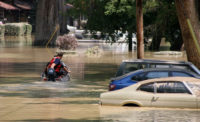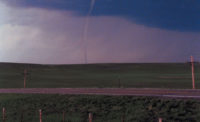Officials are planning the first major rollout of California's earthquake early warning system next year, providing access to some schools, fire stations and more private companies.
The system can give as much as a minute of warning before a major earthquake is felt in metropolitan areas, said the LA Times.
"Until now, only academics, select government agencies and a few private firms have received the alerts. But officials said they are building a new, robust central processing system and now have enough ground sensors in the Los Angeles and San Francisco areas to widen access. They stressed the system is far from perfected but said expanded access will help determine how it works and identify problems," the LA Times said.
The warnings would also allow fire stations to get garage doors open before a quake can jam them shut, instruct students to duck and cover, and, eventually, automatically shut off sensitive equipment at private companies and tell surgeons to halt surgery. When the data is more reliable, even amusement parks could have time to shut down rides, the LA Times said.
The prototype developed by the U.S. Geological Survey and universities including Caltech and UC Berkeley has scored a series of successes, generating alerts in Pasadena before shaking arrived from the 4.4 Encino, 5.1 La Habra and 4.2 Westwood earthquakes earlier this year. San Francisco got eight seconds of warning before strong shaking arrived from the 6.0 Napa earthquake in August.
The 2015 rollout would be ready as long as Congress approves funding, said the LA Times. Committees in both the U.S. Senate and House of Representatives have already approved $5 million for the fiscal year that began in October, but a full vote on the budget was put off until after this month's election. The system needs $16.1 million a year to be completed and maintained.
The early warning system works on a simple principle: The shaking from an earthquake travels at about the speed of sound — slower than the speed of light. That means it would take more than a minute for, say, a 7.8 earthquake that starts at the Salton Sea to shake up Los Angeles 150 miles away.
Seismic sensors stationed at the Salton Sea would detect the first shaking waves in as little as 5 seconds, and blast a warning throughout Southern California. In this scenario, Palm Springs would have 20 seconds of warning; San Bernardino, 45 seconds; and the Los Angeles area, more than a minute.



